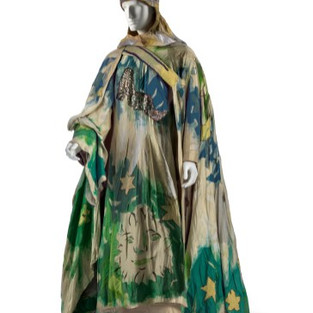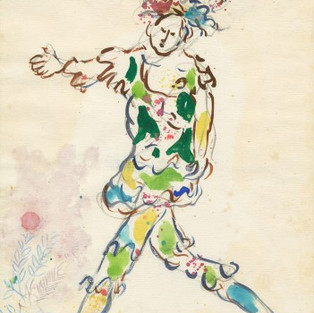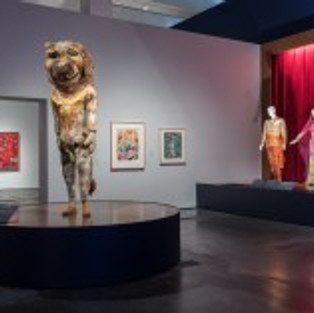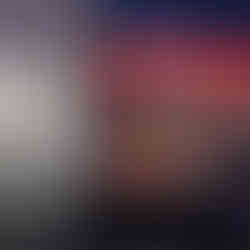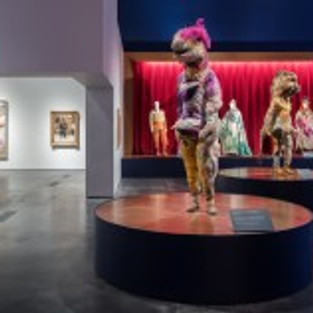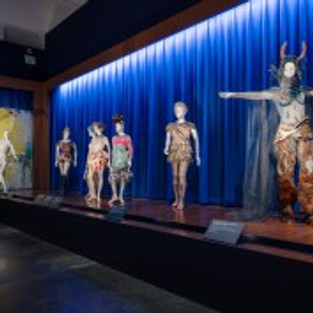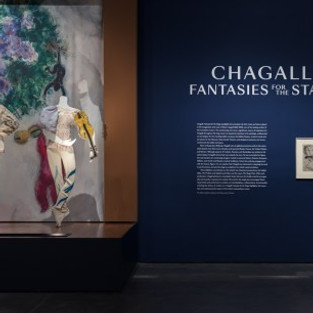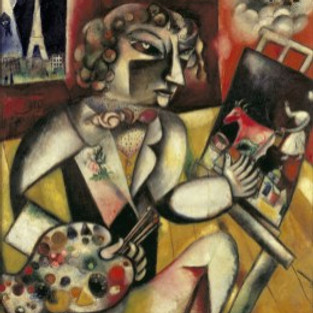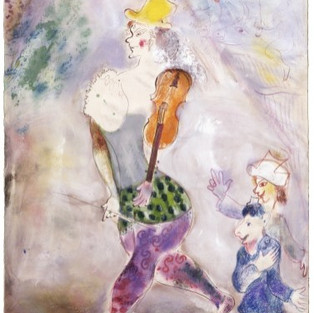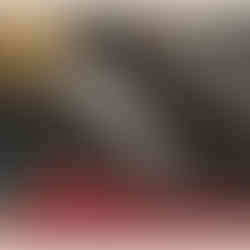Chagall: Fantasies for the Stage at the Los Angeles County Museum of Art
- artandcakela
- Aug 17, 2017
- 4 min read

Installation photograph, Chagall: Fantasies for the Stage, from The Magic Flute, Los Angeles County Museum of Art, July 31, 2017–January 7, 2018, © 2017 Artists Rights Society (ARS), New York / ADAGP, Paris, photo © Fredrik Nilsen.
Chagall: Fantasies for the Stage
at the Los Angeles County Museum of Art
By Molly Enholm
Though January 2, 2018
Chagall: Fantasies for the Stage currently on view at the Los Angeles County Museum of Art has all the ingredients of a blockbuster exhibition: a beloved modern icon and a behind-the-scenes look at the evolution from fantastical sketches to finished paintings, and costumes and set designs that range from whimsical to hallucinatory. Adapted from the recent exhibition Chagall: Colour and Music at the Montreal Museum of Fine Arts, Stepanie Barron, senior curator of modern art at LACMA, racks focus to examine the influence of music and dance on the artist’s long and storied career. What permeates the exhibition, however, is Chagall’s lasting relationship with the theater.
On the surface, the mystical splendor of Chagall’s work belies the strife of the 20th century. Born in 1887, Chagall grew up in poverty in the Hasidic community of Vitebsk, a town later memorialized in numerous prints and paintings by the artist. It was a segregated Russia, isolating Jews from gentiles, where pogroms were not uncommon in and beyond the Pale of Settlement. It was in Vitebsk that Chagall first studied art, and what compelled the young artist to leave his hometown in 1907 to pursue his calling in St. Petersburg. Three years later, after continued struggles with discrimination and brief periods of study, including a stint with artist/theatrical designer Leon Bakst, Chagall moved to Paris. Once established in the center of the avant-garde activity, Chagall quickly found international success fusing the influence of Jewish and Russian folk traditions with the avant-garde innovations of the Symbolists, Fauves, and Cubists. In 1911, Chagall began work on his first of numerous collaborations with the theater, designing the sets for Sergei Diaghilev and the Ballet Russes.
The exhibition at LACMA picks up some 30-years later, as Chagall and his family fled Nazi-occupied France at the invitation of the Metropolitan Museum of Art in 1941. Within a year, Chagall began work to design the sets and costumes for the Ballet Theatre of New York’s Aleko, an adaptation of Alexander Pushkin’s 1824 poem, “The Gypsies.” A combination of rigid union restrictions preventing Chagall from working directly on the theatrical backdrop, and the artist’s intense hands-on approach to the project, resulted in a change of venue to Mexico City. This cast of costumes—now over 70 years old—immediately greets the viewer upon entrance; the hand-painted textiles reveal the artist’s Russian roots enhanced with inspirations gleaned from traditional Mexican motifs. Strategically arranged on a platform directly in front of the theatrical backdrop, it is almost as if characters of Chagall’s paintings have liberated themselves from the two-dimensional flatlands into the three-dimensional world.
The staging of any exhibition featuring theatrical designs faces inherent difficulties. Costumes and backdrops, never meant for viewing at such close proximity, also stand quite removed from the immediacy and emotion of the production itself. The staging of Fantasies takes on a theatricality of its own, skillfully orchestrated by Opera director Yuval Sharon and projection designer Jason H. Thompson. A combination of deep blues and crimsons, lush draperies, original backdrops and projections create a seamless transition between the various sets, proscenia, costumes and works of art. Further in, the viewer is completely engulfed within a series of alternate universes passing through the preliminary sketches with an incredibly contemporary color palette, costumes and completed designs for the 1945 staging of Igor Stravinsky’s The Firebird, the jewel-toned pastoral production of Daphne and Chloe (1959) and aristocratic grandeur of The Magic Flute, Chagall’s only Operatic production staged in 1967 at the Lincoln Center.

Marc Chagall working on the panels for New York’s Metropolitan Opera: The Triumph of Music, Atelier de Gobelins, Paris, 1966, art © 2017 Artists Rights Society (ARS), New York/ADAGP, Paris, photo © 2017 Isiz-Manuel Bidermanas
While immersed in this virtual forest of the artist’s imagination (there are 145 objects, including 41 costumes on view), reality slips away. The fictional worlds of Chagall enliven the viewer; they offer an invitation to imaginary worlds full of beauty, sorrow and mysticism. Stepping back, there is a direct dialogue between Chagall’s fantastical stagecraft designs and his visionary art. The panoramic backdrops for Aleko recall his painted ceiling at the Paris Opera (1964) or The Firebird draw parallels to his trio of stained glass America Windows (1977) at the Art Institute of Chicago. Rather than isolate themes of music and dance, Fantasies for the Stage spotlights the gestalt of Chagall’s collaborations with the theater, and conversely evokes the theatricality that abounds throughout Chagall’s oeuvre.
#losangeles #california #art #stage #losangelesmuseum #onlineartmagazine #losangelesart #lacma #southerncalifornia #costumedesign #artgallery #losangelescountymuseumofart #gallery #museum #artandcake #theatre #ArtandCakeLA #fineart #artists #artist #theater #arts #artreview #artmuseum #Chagall #artmagazine #MarcChagall #ArtandCulture #exhibition #exhibit #FantasiesfortheStage #stagedesign #MollyEnholm #fantasy


